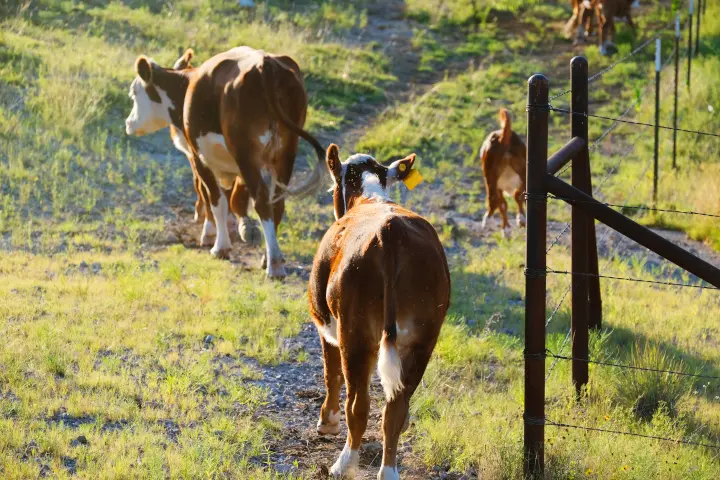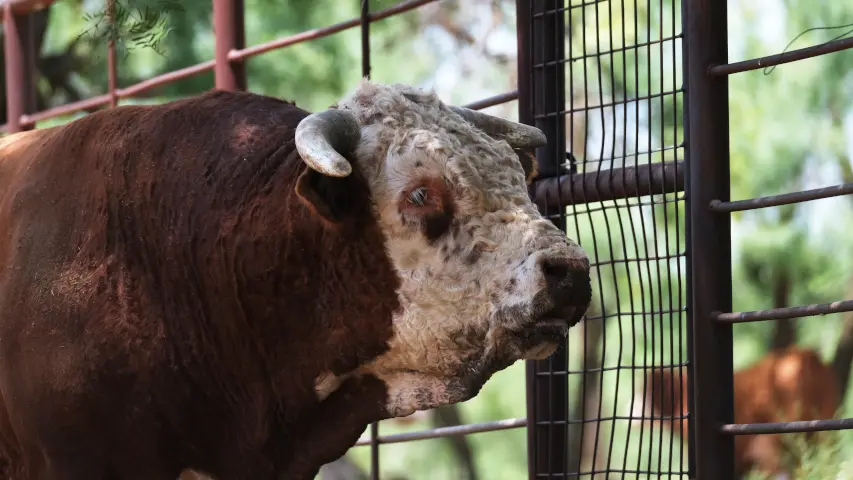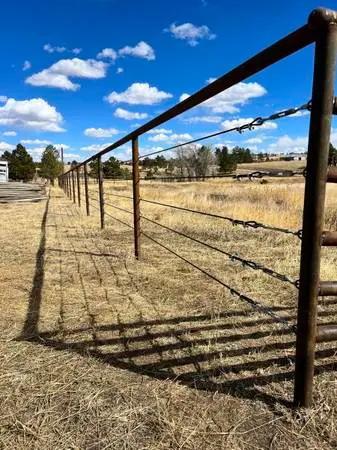August 28, 2025

Herefords are a staple on many Texas ranches. Valued for their docile temperament, strong maternal instincts, and ability to thrive in variable grazing conditions. Their signature white faces and red bodies are easy to spot, but their calm demeanor doesn't mean you can cut corners on fencing.
At Fred Nuncio Fencing, we understand the needs of Hereford cattle and the ranchers who raise them. Whether you’re managing a breeding operation or running a large-scale beef herd, proper fencing keeps your animals safe, healthy, and exactly where they need to be.
Why Herefords Require Tailored Fencing
Herefords are generally well-behaved, but they can still test boundaries—especially during breeding season or when pasture rotations are involved. Their weight and group movement patterns can wear down low-quality fencing over time. Plus, their prominent faces can be more prone to injury from sharp edges or crowded gate systems.

Recommended Fence Types for Herefords
1. Woven Wire with Wooden or Pipe Posts
- Why it works: Safe for facial contact and sturdy enough for large animals.
- Bonus: Keeps calves in and predators out.
2. High-Tensile Smooth Wire
- Why it works: Cost-effective and strong with proper bracing.
- Caution: Needs regular tension checks to prevent sag.
3. Pipe Fence with Cable or Rail Panels
- Why it works: Excellent for breeding pens or feedlots.
- Added Value: Highly visible and virtually maintenance-free.
Smart Fencing Practices
- Post Spacing: Space posts 8-12 feet apart for stability.
- Gate Placement: Use swing gates with smooth latching mechanisms; avoid narrow or tight gates to reduce facial abrasions.
- Fence Height: 4.5 to 5 feet is typically sufficient.
- Bracing: Use double H-braces at corners and gates for longevity.
Visibility and Safety Enhancements

Herefords respond well to visual cues. High-contrast fencing, reflective tape, or painted posts can improve movement flow and reduce panic-driven breakouts. This is particularly helpful during sorting, weaning, or introducing new animals.
Fence Maintenance for Hereford Operations
- Monthly Walkthroughs: Check for wear points or sagging wire.
- Seasonal Tightening: Especially after hot summers or wet winters.
- Weed Control: Prevent overgrowth that can weaken lower fence sections.
Final Word: Long-Term Success Starts at the Fence Line
A properly built fence not only protects your Hereford herd—it boosts pasture efficiency, reduces labor, and increases peace of mind. Fred Nuncio Fencing delivers solutions with your livestock’s safety and your land’s longevity in mind.
Ready to Upgrade Your Hereford Fencing System?
Contact us for a personalized consultation and quote.
Frequently Asked Questions About Hereford Cattle Fencing
When it comes to protecting your Herefords, having the right fence can make or break your ranching operation. Here are answers to the most common questions we hear from ranchers:
A 4.5 to 5-foot fence is ideal for mature Herefords. Taller fences may be necessary in high-traffic or breeding areas.
Barbed wire can be used, but it increases the risk of facial injury—especially to their sensitive white faces. Smooth wire or woven wire is safer.
Inspect monthly, and always after extreme weather. Watch for wire sagging, loose posts, and gate function.
Swing gates with wide openings (10+ feet) and rounded corners reduce injury and ease animal movement.
Yes—especially during breeding season. Pipe and cable fencing in bull pens prevents escapes and holds up to added pressure.